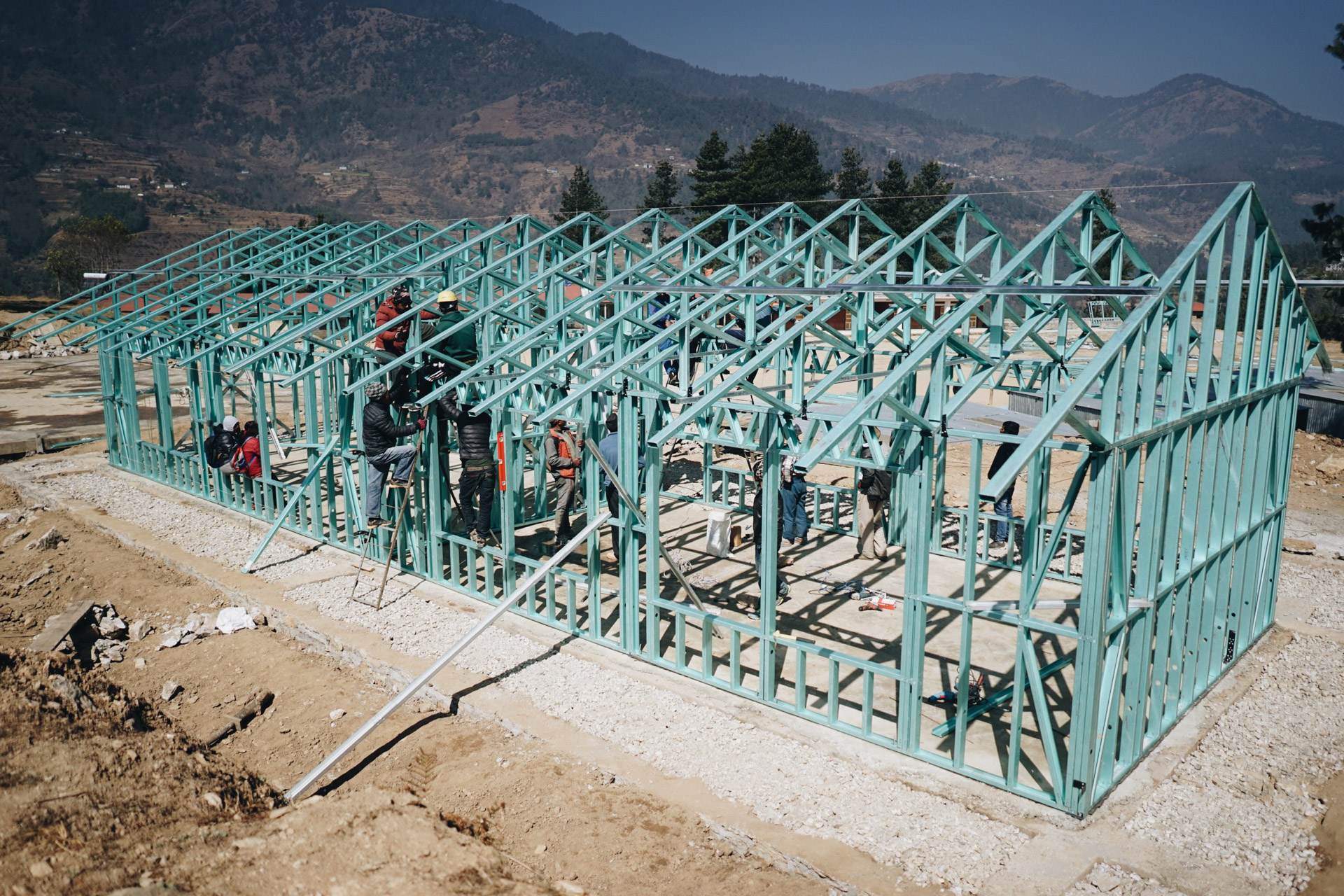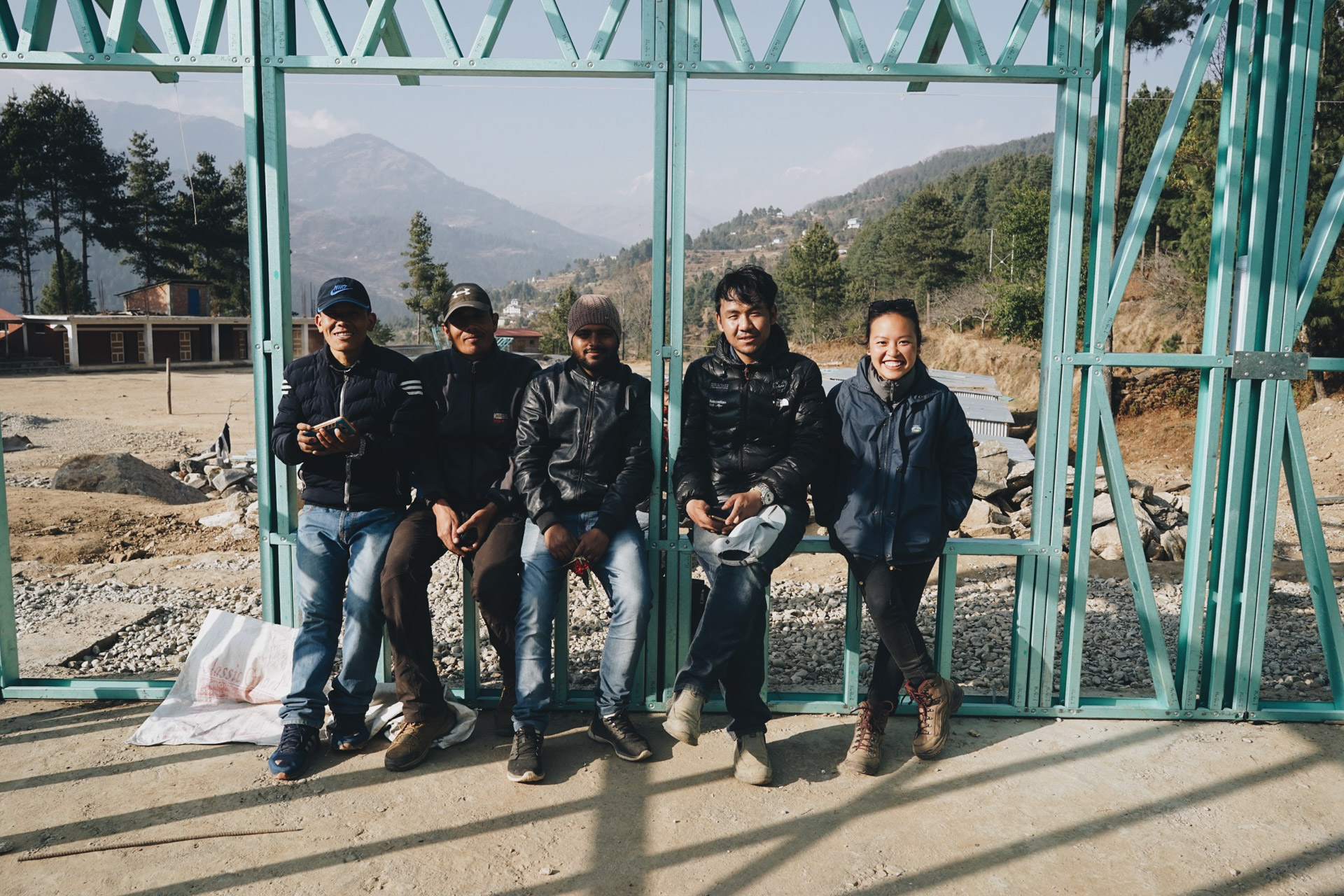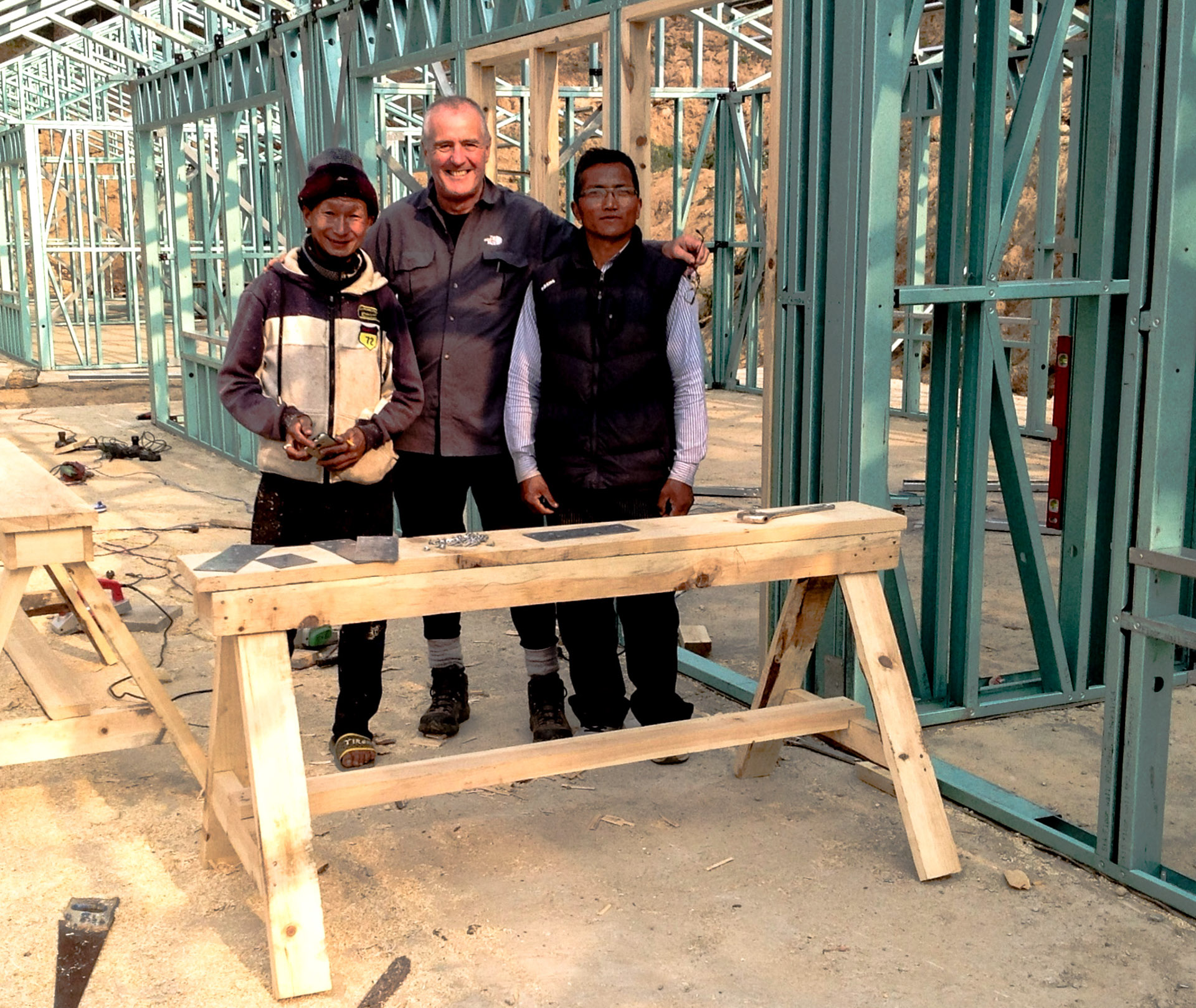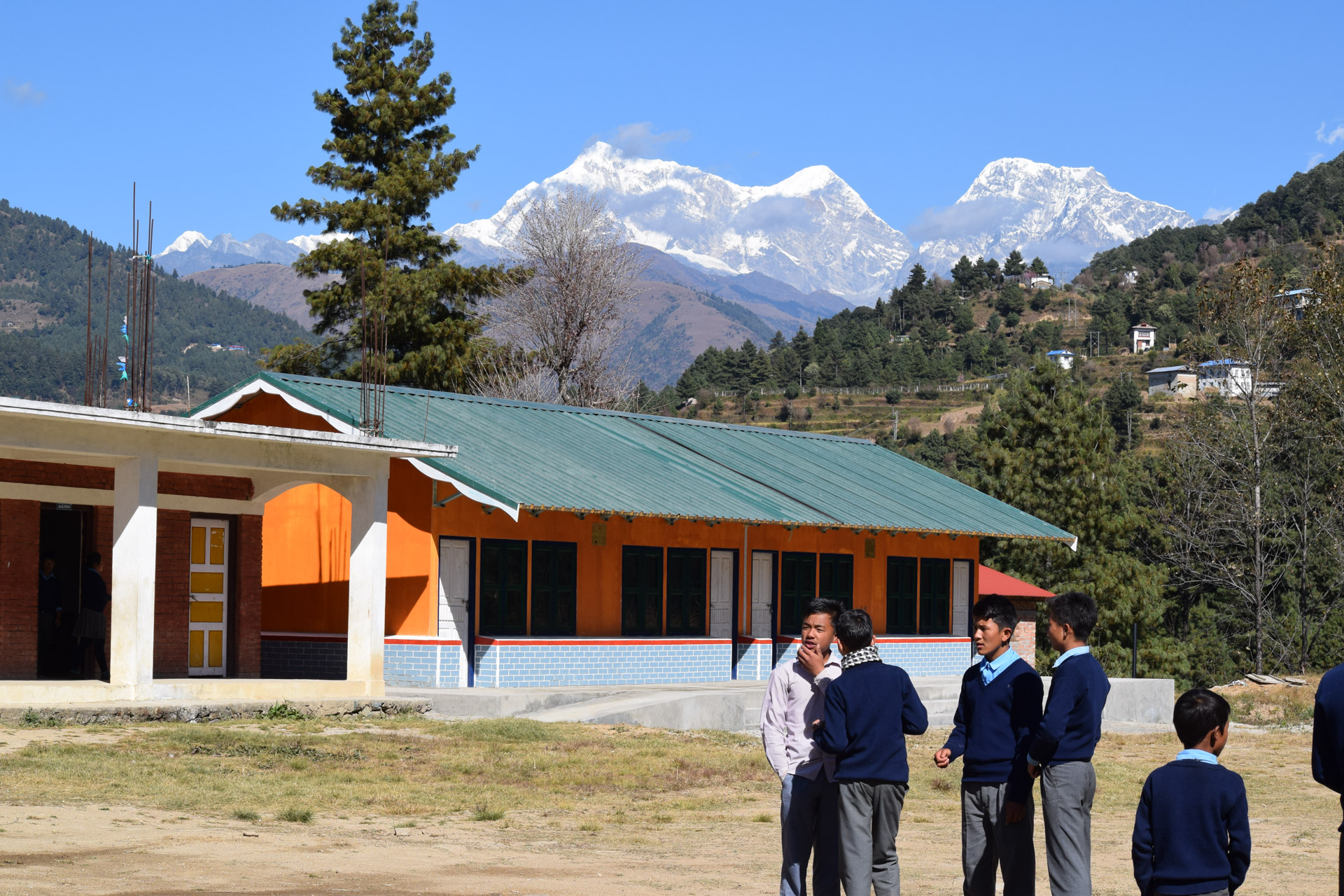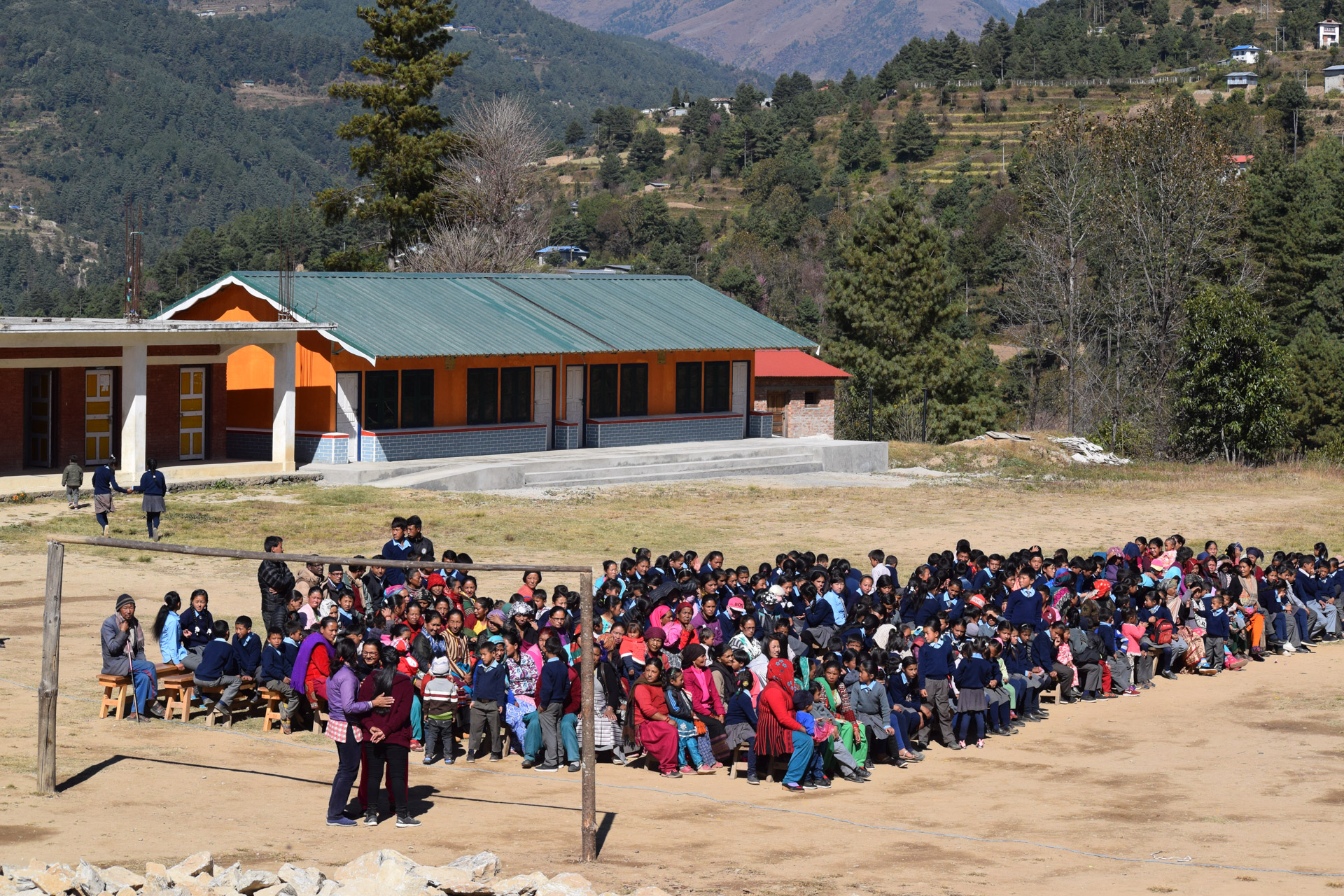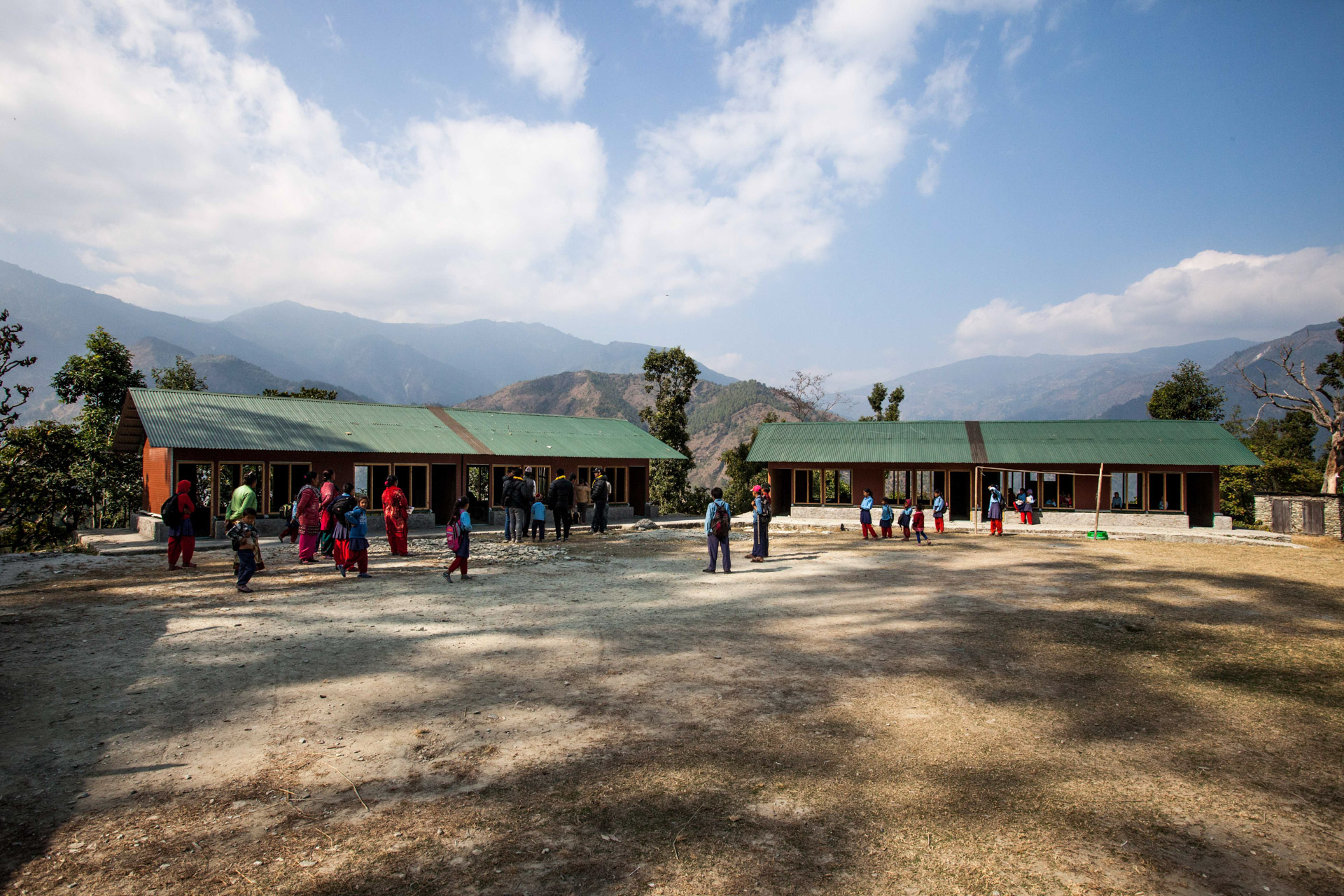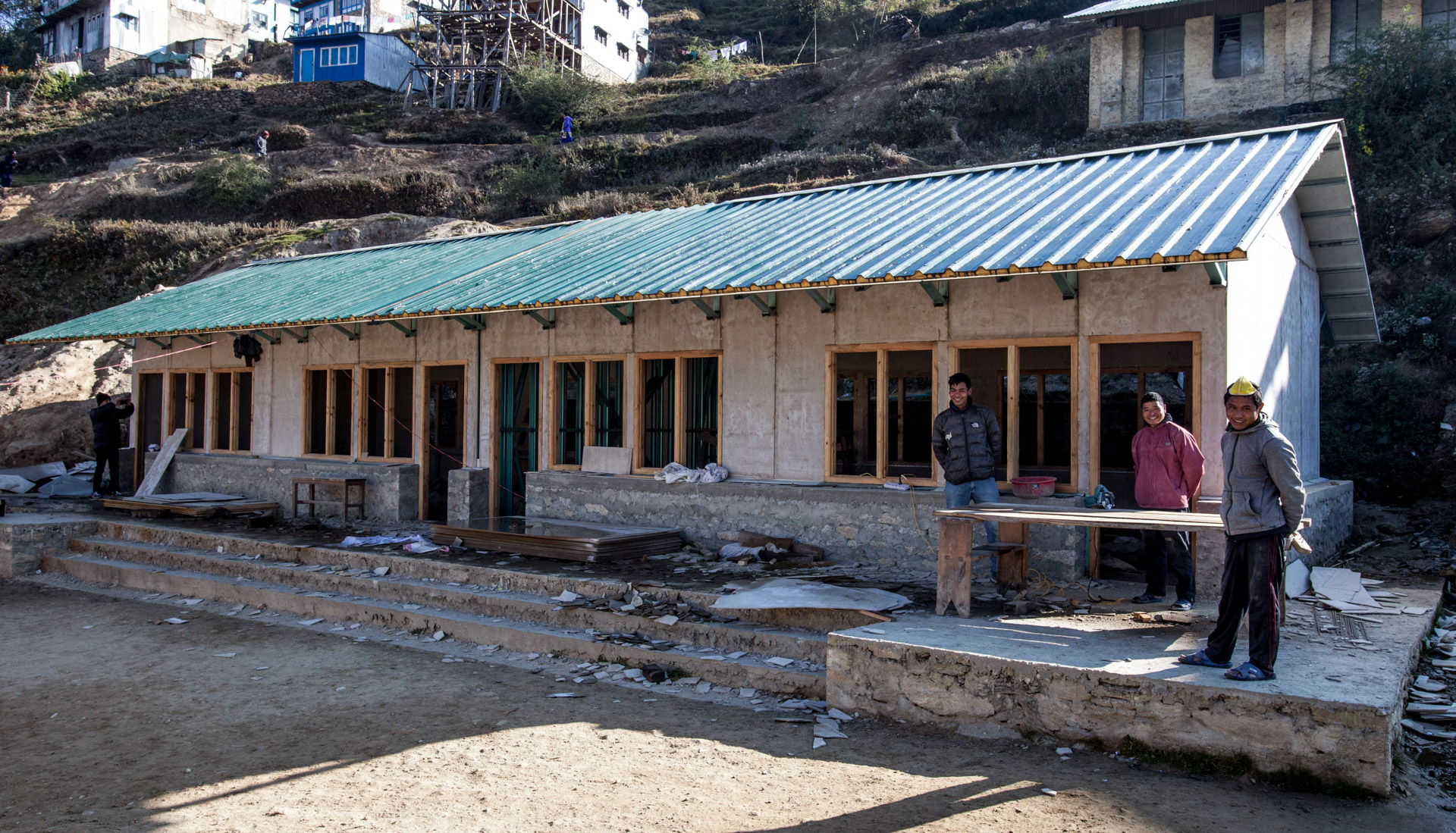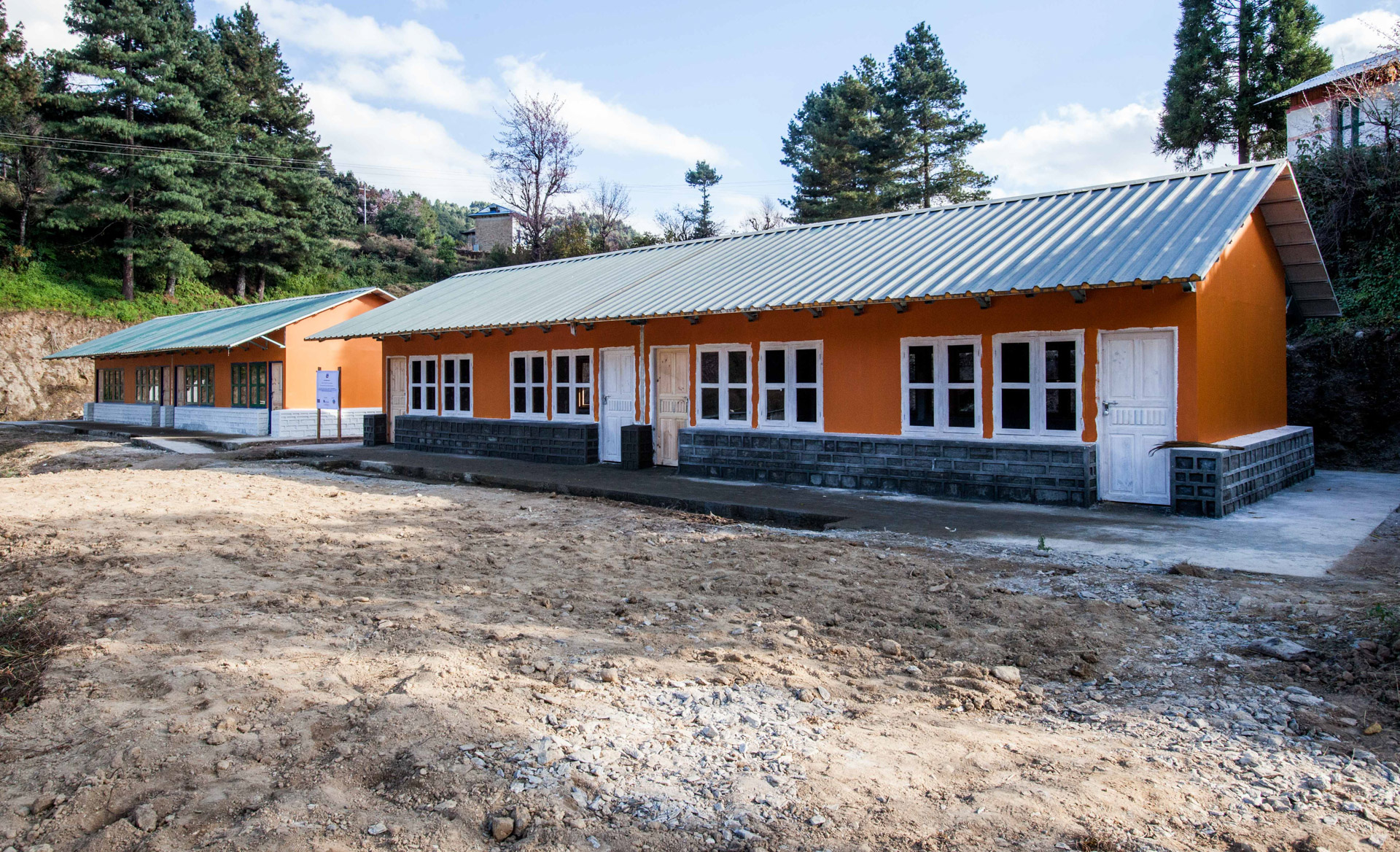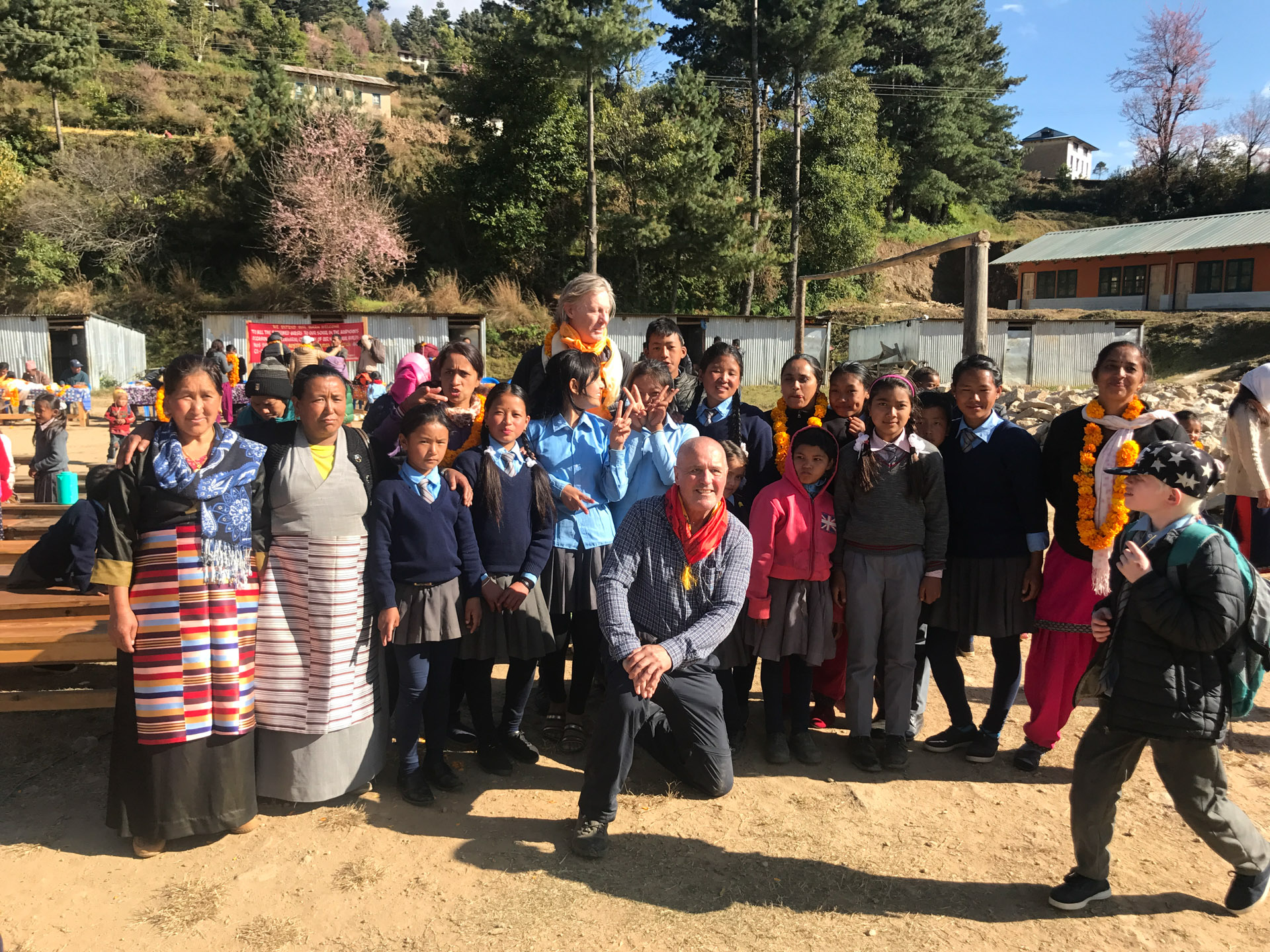Australian team helping to rebuild Nepal!
The 2015 earthquakes in Nepal damaged 200 of the 350 schools supported by the Australian Himalayan Foundation(AHF). TTW engineers and architect Ken McBryde have designed an innovative lightweight earthquake resistant
classroom structure using a prefabricated kit of parts made of cold-formed steel, with the construction of 20 classrooms
now complete.
Design Challenge
Traditionally made of mud and stone, most school buildings in Nepal have little or no engineering basis for their
construction and are extremely vulnerable to earthquakes. Our client AHF required a new classroom design that
was compliant with the Nepal Department of Education guidelines and the relevant Nepal Standards. Additionally,
the design needed to be economical; built of materials that could be carried on foot to school sites more than a
day's walk from the nearest road; and be erected by locals with low-grade building skills, at sites without running
water and electricity.
Design Solution
The design was required to be lightweight (both to minimise seismic demand and for ease of transport); have a
structure built with ductile materials of reliable properties, locally sourced where possible; and be simple and safe to
build. Each piece of the cold-formed steel kit of parts weighs no more than 6 kg. Erection is a "meccano set"
operation with every connection (apart from the base of the steel frame to the slab) made with two self-tapping
screws. A low height perimeter stone wall was utilised to resist wind uplift and to provide the appearance of a "solid"
base.
Design Impact
These revolutionary structures feature a building frame easily assembled by local labour, utilising local stone and
simple building techniques. Environmental sustainability features of the design include rooftop PV panels, rainwater
collection tanks, and wall and roof insulation. The design provides a low-cost, seismic-resistant, portable solution
that can be adapted for a range of different uses, and in a variety of environments across the earthquake-prone
Himalayas. New classrooms also have the potential to provide emergency shelter for the local village after future
earthquake events. Additionally, the program has created apprentice programs, teaching locals new skills such as
basic plumbing, concreting, and steelwork erection.
Other Key Features
More than 8500 schools in Nepal's Solukhumbu region were destroyed or damaged in 2015. This was an opportunity
to rebuild "better" and deliver a seismic-resilient structure that is also functionally far superior to the normal
standard of classrooms in Nepal.
The design team needed to overcome challenges including remote locations, lack of transport infrastructure, poor
communications, very limited options of locally available building materials, low skill levels of local builders, limited
budgets, language barriers, and a bureaucratic government approval process.
The structures also needed to fit into the landscape and belong' - the design incorporates the traditional elements
and style of Nepalese architecture, with functionality and durability that has never been used before in Nepal. The
project also marks the first time cold-formed steel has been used for a school building in the country. None of the
local builders had any experience working with cold-formed steel and were typically stonemasons or unskilled
labourers. After the first few days of learning, the local crew was able to erect framing for a complete classroom in
only two days. With 20 classrooms now completed and in use across five schools, lessons learned are allowing the design to be
refined and adapted for use across Nepal.
2019 see the construction of a new school hall to be completed.
